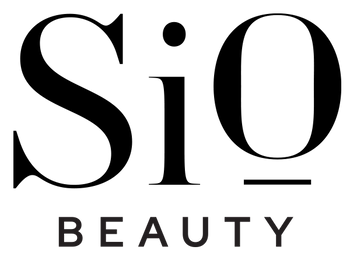Red Light Therapy: Key Benefits and What To Expect

What if we told you that you could make your skin appear younger with the flick of a switch? Or that you could kick acne scars, uneven skin texture, and enlarged pores to the curb, all with just a beam of light?
Cue red light therapy (or RLT), a treatment that‘s joined the ranks of vampire facials, magnetic face masks, and other Insta-worthy dermatology breakthroughs in recent years. While LED lights have been around since the 60s, they’ve become advanced enough in recent years to use at home, much to the delight of skincare junkies everywhere.
RLT emits various wavelengths of light to combat skin issues at a cellular level. It‘s touted for its ability to boost circulation, reduce inflammation, and smooth fine lines and wrinkles.
Curious to learn more about how red light therapy works? Below, we’ll cover all of the details on the benefits, potential side effects, and treatment process for this popular skin solution.
What Is Red Light Therapy?
Red light therapy falls under the umbrella of LED (light-emitting diode) light therapy. Just like LED light bulbs, LED light therapy is non-thermal, meaning it doesn’t produce heat. Rather, this FDA-approved treatment involves using different wavelengths of light to penetrate the skin tissue and target specific skincare concerns.
There are a number of light therapies to choose from depending on your skincare concerns. However, red is one of the most well-loved. It’s a safe, restorative treatment that delivers red LEDs to the skin in low-level frequencies, with benefits ranging from pain relief to anti-aging. For the skin, RLT is said to boost elastin and collagen production while brightening dark spots, ultimately revealing a glowing, clear complexion.
Since red light therapy is non-invasive (and completely chemical-free), it’s received praise from skincare experts, medical professionals, and celebrities alike. Though RLT results are more effective when it’s done by a dermatologist, you can also do it at home with your own device –bonus points for convenience!

Does Red Light Therapy Work?
Though several celebrity facialists and dermatologists have given red light therapy their stamp of approval, many people still wonder: How exactly can light improve your skin?
Since red light therapy emits light waves that deeply penetrate the skin’s dermis, it triggers a reaction on a cellular level (in the mitochondria of the cells, to be specific). This reaction results in increased collagen production and circulation, as well as reduced inflammation. Over time and with consistent use, this can lead to an improvement in acne scars, photoaging, and burns.
Many clinical studies have also proven light therapy to be effective for several skin conditions, such as psoriasis, and to have a positive impact on wound healing.
While the effects of red light therapy aren’t largely disputed, there are concerns over whether at-home treatments truly work. At-home devices (picture those futuristic-looking LED face masks that appear on your nightly Instagram scroll) are considerably weaker than their in-office counterparts, and therefore less effective.
With that said, if you’re using red light therapy to supplement your skincare routine or to maintain results in between office treatments, it can offer significant benefits. In either case, the results of red light therapy don‘t happen overnight, and you’ll need to stick with it to notice a difference in your skin.

What To Expect At Your Appointment
Wondering what happens during a red light therapy session? Here’s everything you need to know, from how much it costs to how to prep your skin beforehand.
Prepping The Skin
Before getting red light therapy, be sure to limit sun exposure and diligently wear SPF 30 sunscreen to prevent UV damage. Whether you do an at-home or in-office treatment, your skin must be makeup-free, cleansed, and thoroughly dried.
To avoid irritating your skin pre-treatment, use a cleanser with a gentle, sulfate-free formula. Additionally, while some people choose to wear moisturizer before their treatment, it’s not necessary and doesn’t affect the results. After prepping your skin, you’ll be given goggles to protect your eyes from the bright lights (if you’re in an office).
Choosing Your Light
The best type of light for you will depend on your skincare goals. Red light therapy is predominantly used to promote collagen production, target fine lines and wrinkles, reduce acne scars, and plump the skin. If you‘re looking to ward off acne-causing bacteria, control oil, treat cystic acne, or minimize breakout-related inflammation, blue light therapy is a better match for your needs.
Cost And Duration
During an in-office LED light therapy session, you’ll either lie down under an LED light or your dermatologist will use a red light therapy device (such as a wand) on your skin. This can cost anywhere from $100 to $300 per session.
Each LED light therapy session lasts about 20 minutes (quick enough to finish it during your lunch break) and is painless. In fact, some people even find the bright lights to be relaxing. Additionally, unlike lasers, LED therapy is suitable for all skin tones and types.
Potential Side Effects and Downsides Of Red Light Therapy
Though red light therapy is FDA-approved, requires no downtime, and has been deemed safe by the experts, there are some potential drawbacks:
Skin Sensitivity
Though short-term side effects from RLT are rare, be on the lookout for severe inflammation, redness, or itchiness after your appointment. Additionally, if you have a skin condition, are generally sensitive to light, or are taking medications that increase photosensitivity (such as Accutane for acne), you may not be a candidate for RLT.
It’s always best to obtain professional medical advice before trying out a new beauty treatment, given that some medications don’t clearly advertise their photo-sensitizing effects.

Multiple Sessions
Everyone responds differently to light therapy. So, for professional red light therapy, follow your medical provider’s advice to determine the frequency of your sessions. Keep in mind that once the treatment has had its desired effect, you may need follow-up treatments to maintain the results.
The good news? Since RLT results are cumulative, your skin is likely to noticeably improve after each session.
To maintain a healthy glow between RLT sessions, you can use medical-grade silicone patches (such as the SiO Beauty SuperLift Pack). These patches are designed to minimize the appearance of wrinkles while deeply hydrating the skin. Together, red light therapy and silicone patches are a powerful duo.
Benefits Of Red Light Therapy
Red light therapy has a variety of benefits, including some that extend beyond the realm of skincare. Key benefits include:
Boosts Circulation
Good blood circulation isn’t just crucial for the health of your body - it‘s vital for healthy skin, too! With optimal blood flow, your body receives a continuous flow of oxygen and nutrients. This allows the organs, including your skin, to function normally.
Red light therapy is an effective, non-invasive way to boost circulation in the skin for a clearer, more nourished complexion.
Heals Wounds
Since RLT therapy boosts circulation, it also speeds up the body‘s natural repair process. Studies have found that light therapy can stimulate the wound-healing process, as well as reduce the appearance of acne scars, hypertrophic scars, bruises, and burns. If used in conjunction with blue light therapy, red light therapy also has the potential to minimize inflammation from acne.
Reduces The Signs Of Aging
By stimulating collagen and fibroblast production, red light therapy has been proven to minimize telltale signs of aging, including crow’s feet, deep-set wrinkles, and fine lines. It can also brighten dark spots over time, giving the skin a more youthful appearance overall.
In one study, the subjects “experienced significantly improved skin complexion and skin feeling” after low-level laser therapy, as well as higher collagen density and a smoother skin texture.

Relieves Pain
If you’re struggling with joint or back pain, arthritis, or other forms of chronic inflammation, red light therapy can be an effective treatment for pain relief. This type of light therapy enhances muscle repair and recovery, especially when combined with infrared light therapy. RLT can even be used to enhance muscle recovery before or after a grueling workout.
Supports Hair Growth
Red light therapy is widely used by men and women experiencing hair loss, namely as a result of alopecia. It’s been found to improve hair count, thickness, density, and strength with consistent treatment, without the need for messy topical creams or hair growth medications (and their often unfortunate side effects).
Repairs Sun Damage

LED light therapy isn‘t to be confused with UV rays or tanning, which not only accelerate skin aging, but can also lead to skin cancer. Since red light therapy speeds up the body’s natural healing process, it can increase the immune response to dark spots, hyperpigmentation, and scarring. As a result, the treatment helps eliminate dead skin cells and make way for new ones to form.
How Long Does Red Light Therapy Take To Work?
The amount of time required to see results from red light therapy depends on the skincare concern being targeted and the treatment area, among other factors. As we mentioned earlier, the results are cumulative, and you may see minor results after three to four sessions.
Unlike other, more invasive treatment options, there’s no recovery time when it comes to light therapy. So, it’ll be business as usual immediately after your treatment! Plus, LED light therapy can be done on more than just your face – it’s suitable for the neck, chest, arms, and legs, too.
How Often Should You Do Red Light Therapy?
To reap the full benefits of your low-level light therapy treatments, you’ll likely need eight to 10 sessions, spaced one week apart. After completing your sessions, you may require follow-up treatments to maintain the results. But, if you’re doing light therapy at home, you can use your LED system in between in-office sessions, or whenever your skin needs a boost.
Closing
Red light therapy is a safe, non-invasive treatment that combats skin concerns ranging from wrinkles to dark spots and sun damage to smile lines. By boosting circulation and increasing collagen production, it also enhances the skin’s overall wellness.
If you’re intrigued by the benefits of RLT for the skin, talk to your dermatologist to find out if it could work for you.

